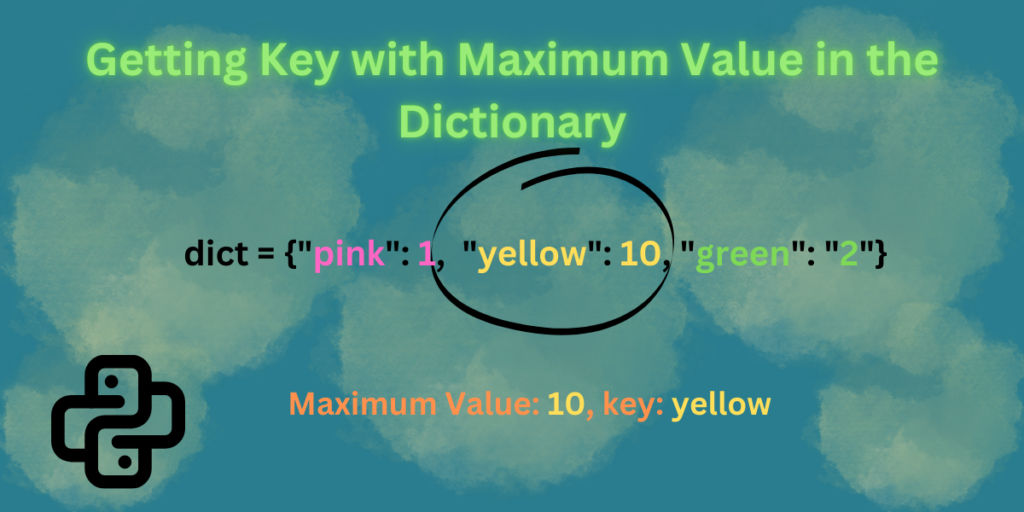A dictionary is a data structure used for storing a group of objects in python. Dictionaries have a set of keys and values, each with an associated value. In simple words, we can say the dictionary stores data in key-value pairs. A pair of curly braces "{}" creates a dictionary with no value.
Keys are unique within a dictionary, while values may not be. Keys are unique identifiers.
What is a Dictionary?
The dictionary is a data structure like lists, tuples, and sets. A dictionary is used for storing data or a group of objects. Dictionary stores data in key-value pairs. In simple words, we can say the dictionary stores data in key-value pairs. A pair of curly braces "{}" creates a dictionary with no value. We add the key: value separated with the comma.
Syntax:
dict = { key: value, "key": value, "key": "value" ..... }
Let’s take a look at a simple example of a dictionary
dict = {"name": "Dhushi", "age": 6, "color": "white"}
for k in dict.keys():
print(f'key: {k}')
for v in dict.values():
print(f'value: {v}')
for key, value in dict.items():
print(f'Key: {key} and value: {value}')
- assigned a dictionary to variable dict with keys(name, age, color) and values(Dhushi, 6, white)
- firstly, printing only the keys => name, age, color using the for loop and keys() method, which will return all the keys present in the dictionary
- secondly, printing only the values=> Dhushi, 6, white using the for loop and values() method, which will return all the values present in the dictionary
- lastly, printing keys and values using the for loop and items() method, which will return all the keys and values present in the dictionary

In the result, we see that firstly all the keys are printed using the keys() method, then all the values of the dictionary using the values() method, and lastly, we are getting both keys and values using the items() method.
You may check: For Loop with Two Variables in Python
Using max() function
As we understand by seeing the word max, which means maximum value. So here, also max() function returns the item with the highest value. Let’s take a look at an example of how to use it.
Example 1:
dict = {"Dhushi": 6, "Lee": 32, "Pink": 12}
print(max(dict, key = dict.get))
- assigning dictionary with key-values pair to variable dict like we normally do
- here we are printing the key with the maximum value using
max()function - use
max()function with the key parameter set todict.get()to find and return the key of the maximum value in the given dictionary
Syntax of max() function
max(iterable, *iterables, key, default)

dict.get is a function that returns a value for the corresponding key in dict. When max looking for the largest value, it uses the return value of the key. When we pass dict into max function, it iterates over the keys of the dictionary. max() returns the largest element from an iterable.
Example 2:
In this example, we are using zip() function inside the max function. Python’s zip() function is defined as zip(*iterables). The zip() function is used to aggregate or combine multiple iterables.
dict = {"Dhushi": 6, "Lee": 32, "Pink": 12}
result = max(zip(dict.values(), dict.keys()))[1]
print(result)
- assigned a dictionary with keys and values to dict variable
- in the result variable, we are storing the maximum value key by using the
max()function andzip()function - here, inside the zip() function, we are iterating over
dict.values()for the values anddict.keys()for the keys, and from there, the max process works over both keys and values, prints the [1] index, which means keys here. If we put [0] index, then it will print the value; if we do not put anything, it will showcase both the maximum value and key.

In the result, we get the key(Lee) as it has the maximum value(32) among the other key-value pair.
Example 3:
In this example, we will use the lambda function inside the max() function to find the key with the maximum value. Lambda is an anonymous function that can take any number of arguments.
dict = {'Dhushi':6, 'Lee':32, 'Pink': 100}
print(max(dict, key=lambda k: dict[k]))
- assigned a dictionary with keys and values to dict variable
- here we are printing the maximum value key using the max and lambda functions inside it. The function
keysimply returns the value that should be used for ranking andmax()returns the demanded element right away.

In the result, we get the key: Pink, whose value is 100, so the output comes to Pink.
You may check: Compare Two Dictionaries and Check if Key-Value Pairs are Equal
Conclusion
In this article, we learned how to create a dictionary and how we can find only keys and values using the keys() and values() method. The items() method is used for showing both keys-values of the dictionary. We use the max() function to find the maximum value in the dictionary. Inside the max function, we used the zip and lambda functions which helped us to find the keys with the maximum value.
You can refer to Python’s official Documentation for more topics.
